BSC2010 - Chapter 12
1/128
Earn XP
Description and Tags
The Cell Cycle
Name | Mastery | Learn | Test | Matching | Spaced |
|---|
No study sessions yet.
129 Terms
Cell Divison
The process by which a parent cell divides into two or more daughter cells.
What best distinguishes living things from nonliving things?
Their ability to reproduce
Unicellular Organisims
Organisms which are made of only one cell.
What is the role of cell division in unicellular organisms?
Division of one cell reproduces the entire organism.
For what three purposes do multicellular eukaryotes depend on cell division?
Development from a fertilized cell, Growth, and Repair of tissues.
Of what is cell division an integral part?
The cell cycle (the life of a cell from its formation until it divides into daughter cells).
What is the overarching importance of cell division?
It is the fundamental process necessary for an organism's reproduction, growth, and maintenance.
Which image describes cell reproduction under the microscope?
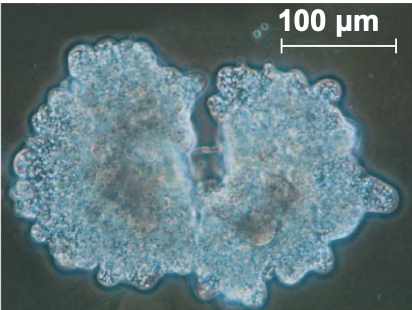
Which image describes cell growth and development under the microscope?
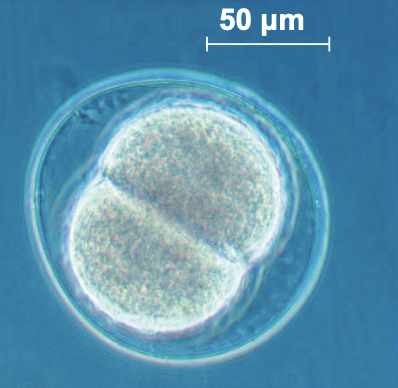
Which image describes tissue renewal under the microscope?
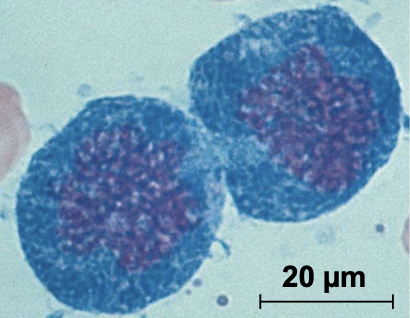
Most cell division results in:
Daughter cells with identical genetic information (DNA).
What is the exception to the usual type of cell division (mitosis)
Meiosis, a special type of cell division involving two rounds of division.
What is the specific product of meiosis?
Sperm and egg cells (gametes), which are used for sexual reproduction.
Genome
All the DNA in a cell.
Chromosomes
Threadlike structures located inside the nucleus of animal and plant cells that carry genetic information in the form of DNA.
What can a genome consist of?
A single DNA molecule (common in prokaryotes) or a number of DNA molecules (common in eukaryotic cells).
Chromatin
A complex of DNA and protein that condenses during cell division.
Does every eukaryotic species have a characteristic number of chromosomes in each cell nucleus?
yes.
Somatic cells
(Non-reproductive cells) have two sets of chromosomes.
Gametes
(Reproductive cells: sperm and eggs) have half as many chromosomes as somatic cells.
What do eukaryotic cells do in preparation for cell division?
DNA is replicated and the chromosomes condense.
Sister Chromatids
The two identical copies of a single chromosome that are created after DNA replication.
How many sister chromatids does each duplicated chromsome have?
Two attached along their lengths by cohesins.
Cohesins
Ring-shaped protein complexes found in all eukaryotic cells.
Centromere
The narrow “waist” of the duplicated chromosome where the two chromatids are most closely attached.
How do the two sister chromatids behave during cell division?
The two sister chromatids of each duplicated chromosome separate and move into two nuclei.
When do the chromatids become chromosomes?
When they are separated during cell division.
Eukaryotic cell division consists of:
Mitosis and cytokinesis.
Mitosis
The division of the genetic material in the nucleus.
Cytokinesis
The division of the cytoplasm.
Gametes are produced by:
A variation of cell division called meiosis.
In meiosis, the parent cells yeild _________ daughter cells
nonidentical
In meiosis, the nonidentical daughter cells have _________ as many chromosomes as the parent cell.
half
What did German anatomist Walther Flemming develop in 1882?
Dyes to observe chromosomes durring mitosis and cytokinesis.
What does the cell cycle consist of?
Mitotic (M) phase and Interphase.
What does the Mitotic phase consist of?
Mitosis and cytokinesis.
Interphase
The stage of cell growth and copying of chromosomes in preparation fro cell division.
How much of the cell cycle is interphase?
90%
What are the three subphases of interphase?
g1 phase (“first gap”)
S phase (“synthesis”)
G2 phase (“second gap”)
The cell grows during all three phases of interphase but chromosomes are duplicated only during the __________.
S phase
Which image describes the cell cycle?
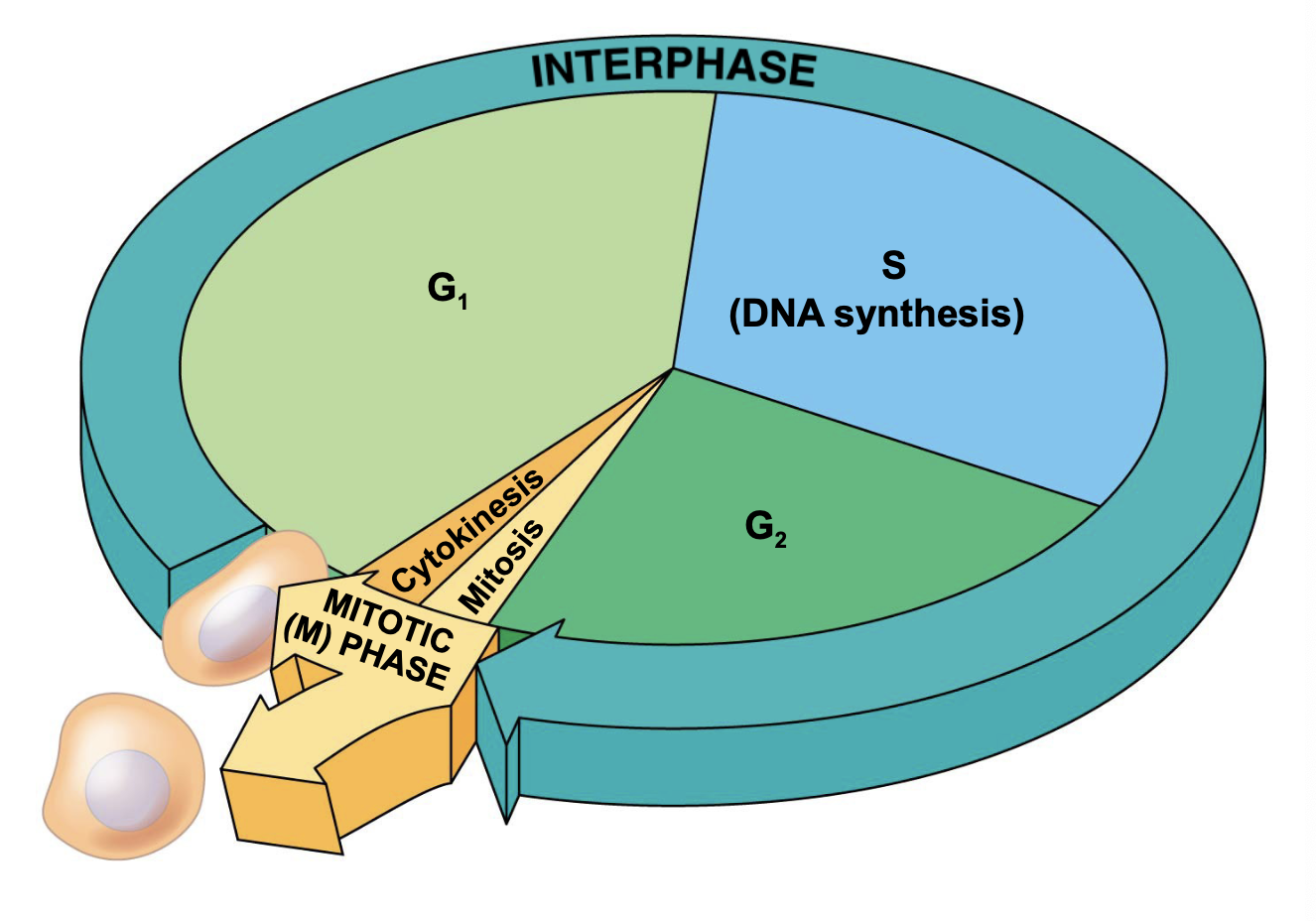
Which image describes the G2 phase?
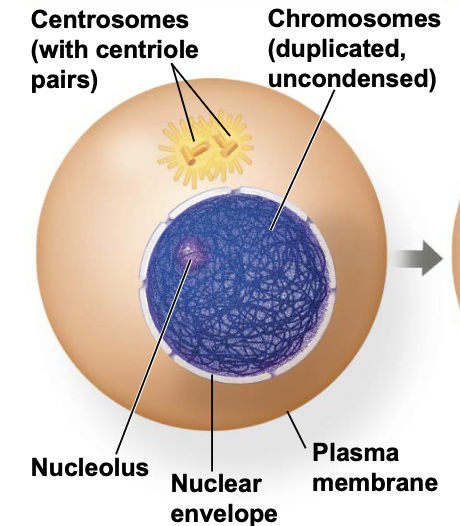
Which image describes prophase?
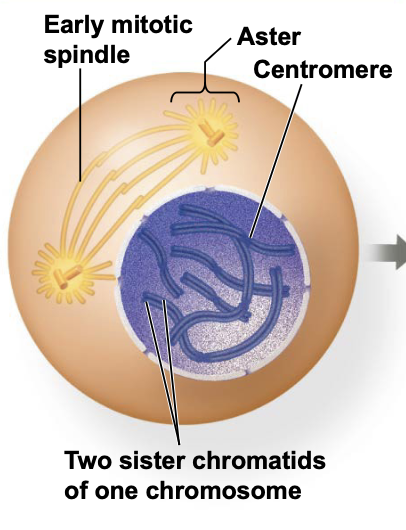
Which image describes the prometaphase?
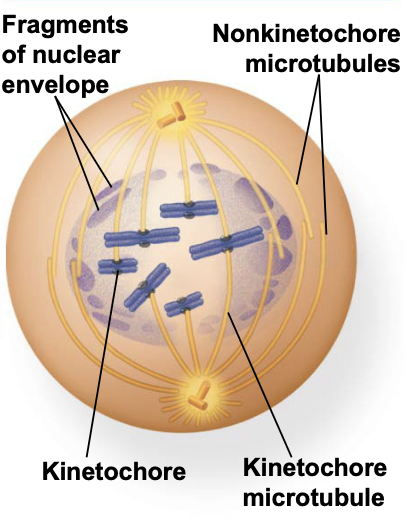
Which image describes metaphase?
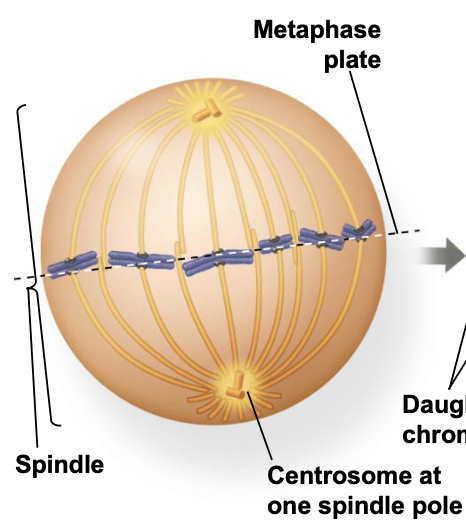
Which image describes anaphase?
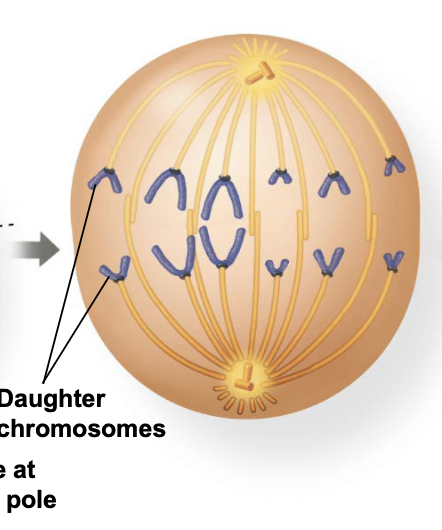
Which image describes telophase and cytokinesis?
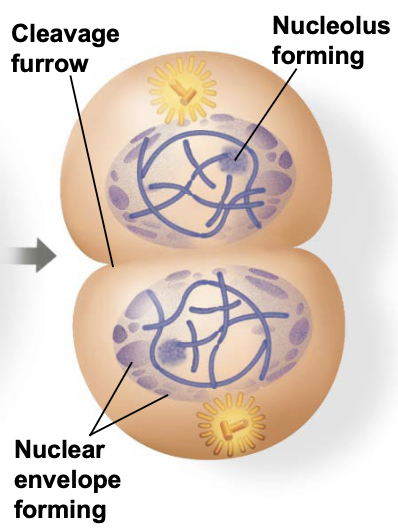
Mitotic Spindle
A structure made of microtubules that controls chromosome movement during mitosis.
Where does the assembly of spindle microtubules begin in animal cells?
In the centrosome.
Centrosome
The principal Microtubule-Organizing Center (MTOC) in most animal cells and is a critical regulator of cell cycle progression and structure.
Microtubule-Organizing Center (MTOC)
A general term for a structure in eukaryotic cells that starts the assembly of, anchors, and organizes the cell's microtubules.
Microtubules
The largest components of the cytoskeleton—the structural framework of eukaryotic cells. They are rigid, hollow, rod-like structures that function as the cell's internal scaffolding, railway network, and machinery for cell division.
When does the centrosome replicate?
During interphase
How many centrosomes are replicated during the interphase?
Two centrosomes which then migrate to opposite ends of the cell during prophase and pro-metaphase.
Aster
A radical array of short microtubules
An ________ extends from each chromosome.
Aster
What is the spindle made out of?
Centrosomes, the spindle microtubules, and the asters.
What major event marks the start of prometaphase?
The nuclear envelope breaks down, allowing spindle microtubules to interact with chromosomes.
What do some spindle microtubules attach to during prometaphase?
They attach to kinetochores, specialized protein structures on the centromeres of chromosomes.
Kinetochores
Protein complexes associated with centromeres.
Metaphase Plate
A plane midway between the spindle’s two poles.
What happens to the chromosomes once the microtubules attach to the kinetochores?
The chromosomes begin to move toward the center of the cell (preparing for metaphase alignment).
What enzyme cleaves the cohesins holding sister chromatids together during anaphase?
Separase cleaves the cohesins, allowing the sister chromatids to separate.
What happens to sister chromatids once the cohesins are cleaved?
The sister chromatids separate and move along the kinetochore microtubules toward opposite poles of the cell.
How do the kinetochore microtubules move the chromatids during anaphase?
The microtubules shorten by depolymerizing at their kinetochore ends, pulling chromatids apart.
Depolymerizing
Breaking down a polymer into smaller units.
What do nonkinetochore microtubules from opposite poles do during mitosis?
They overlap and push against each other, helping elongate the cell.
What forms during telophase at opposite ends of the cell?
Genetically identical daughter nuclei form as new nuclear envelopes develop around the chromosomes.
When does cytokinesis begin?
Cytokinesis begins during anaphase or telophase and continues until the cell fully splits into two.
What happens to the mitotic spindle after cell division is nearly complete?
The spindle disassembles as mitosis ends and the cell returns to its interphase state.
Cleavage
The process of splitting the cell’s cytoplasm during cytokinesis in animal cells.
Cleavage Furrow
A pinching indentation that deepens until the cell divides into two daughter cells.
How does cytokinesis occur in animal cells?
By a process known as cleavage, forming a cleavage furrow.
How does cytokinesis occur by in plant cells?
A cell plate forms.
Cell Plate
The structure that forms during cytokinesis in plant cells.
Which image describes the cleavage of an animal cell?
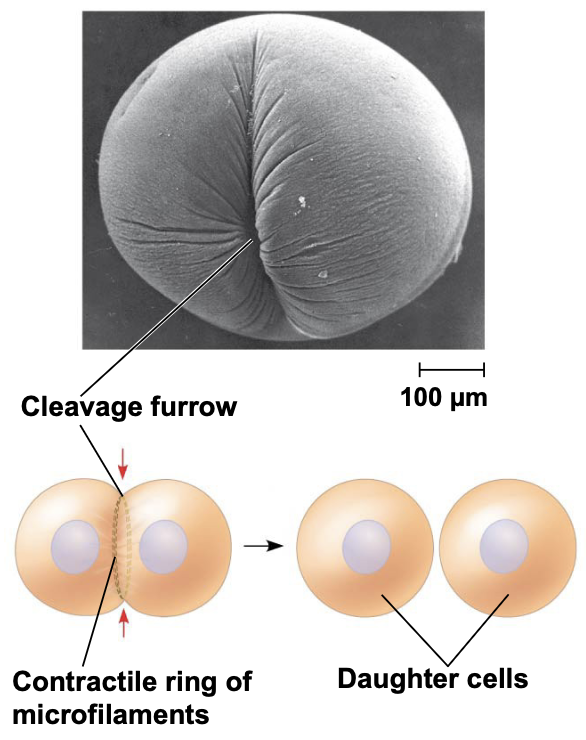
Which image describes the cell plate formation in a plant cell (TEM)?
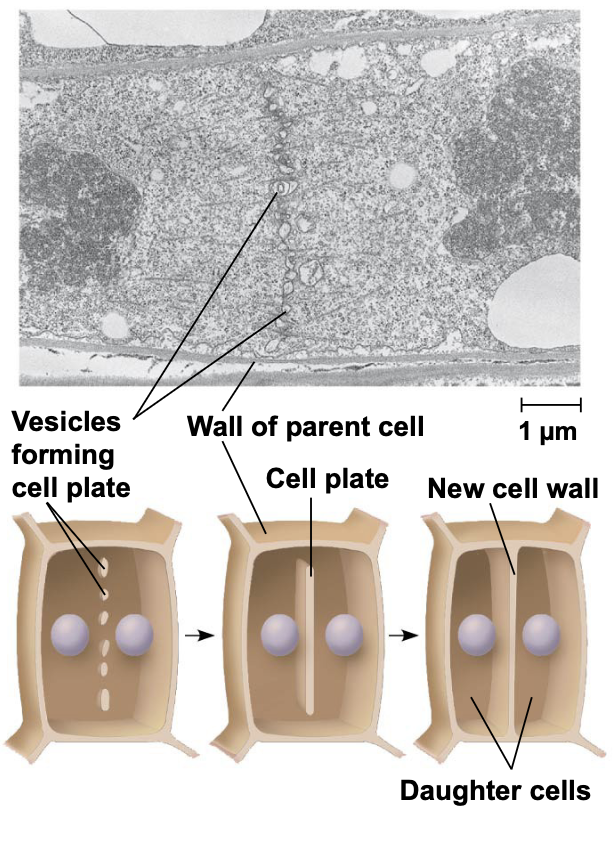
How do prokaryotes reproduce?
By a type of cell division called binary fission.
Binary Fission
A type of cell division used by prokaryotes.
Origin of replication
The specific location on a DNA molecule where DNA replication begins.
How does binary fisson work?
The chromosome replicates (beginning at the origin of replication) and the two daughter chromosomes actively move apart.
How does cytokinesis occur in animal cells?
The plasma membrane pinches inward, dividing the cell into two.
What is the evolutionary relationship between binary fission and mitosis?
Mitosis probably evolved from binary fission because prokaryotes (which use binary fission) evolved before eukaryotes.
What evidence supports the idea that mitosis evolved from binary fission?
Some protists show types of cell division that are intermediate between binary fission and mitosis.
Does the frequency of cell division stay the same in all cells?
No, it varies with the type of cell.
What causes differences in how often cells divide?
Differences result from regulation at the molecular level.
How do cancer cells behave differently in terms of the cell cycle?
Cancer cells escape the usual controls on the cell cycle, dividing uncontrollably.
What drives the cell cycle in eukaryotic cells?
The cell cycle is driven by specific chemical signals present in the cytoplasm.
What experimental evidence supports the idea that the cytoplasm drives the cell cycle?
Experiments showed that when mammalian cells at different cell cycle phases were fused, the chemical signals in the cytoplasm could influence the other nucleus, affecting its progression through the cycle.
Cell Cycle Control System
The cell’s internal “clock” and “checkpoint manager” that regulates the timing and progression of the cell cycle.
What is the cell cycle control system regulated by?
Internal and external controls
The clock has specific ___________ where the cell
cycle stops until a go-ahead signal is received
Checkpoints
Checkpoints
Control points in the cell cycle where the cell pauses to assess whether certain conditions are met before continuing to the next phase.
What are the two types of regulatory proteins involved in cell cycle control?
Cyclins and cyclin-dependent kinases (Cdks)
Cyclins
A family of proteins that regulate the cell cycle.
Cyclin-Dependent Kinases (Cdks)
Enzymes that drive the cell cycle forward (the “engine” of the cell cycle)
What causes the activity of a Cdk to rise and fall?
The activity of a Cdk rises and falls with changes in the concentration of its cyclin partner.
What is MPF and what does it do?
MPF (maturation-promoting factor) is a cyclin-Cdk complex that triggers the cell’s passage past the G2 checkpoint into M phase.
Where do the signals that control cell cycle checkpoints come from?
Signals come from cellular surveillance mechanisms inside the cell and from external signals outside the cell.
What are the three most important cell cycle checkpoints?
The G1 checkpoint, G2 checkpoint, and M checkpoint.